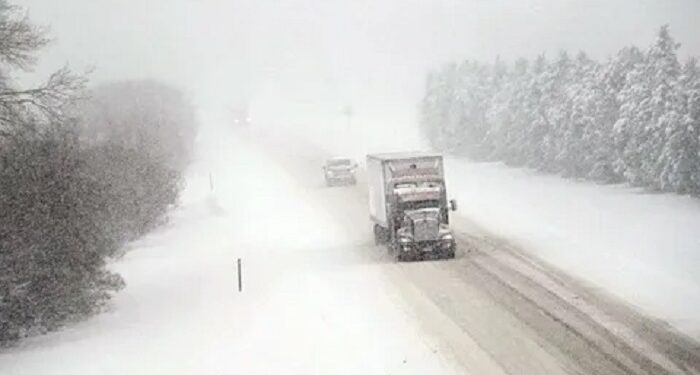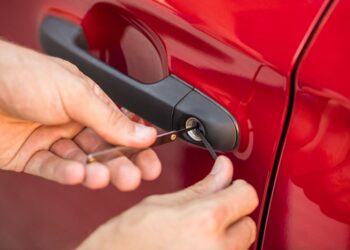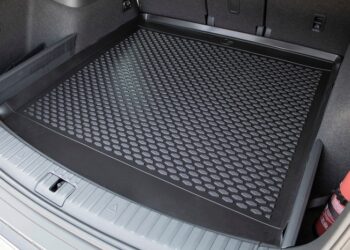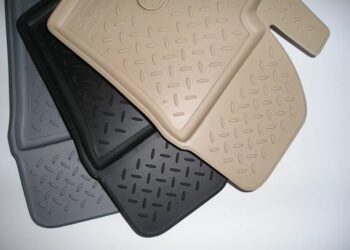Milwaukee’s unique geography exposes flatbed freight to intense lake-effect snow and freezing rain, creating significant challenges for cargo protection. As cold air moves over Lake Michigan, it gathers moisture and deposits heavy, wet snow onto flatbed trailers, often accompanied by slick ice layers that complicate unloading and handling. For Milwaukee freight haulers, effective flatbed tarping is not just about covering cargo — it’s a critical line of defense against weather-related damage and delays.
The combination of lake-effect snow and freezing rain demands specialized ice protection strategies. Drivers must contend with frigid tarp folds that trap moisture and form ice, necessitating tools like snow brushes and anti-icing tarps to maintain a secure load. Additionally, incorporating a drip edge can prevent water accumulation that freezes into hazardous ice sheets, while occasional use of de-icer spray and hot-shot blowers helps keep tarps flexible and ice-free.
Understanding these challenges is essential for Milwaukee flatbed operators aiming to safeguard cargo integrity and ensure timely delivery throughout harsh winter months.
2. Importance of Flatbed Tarping in Harsh Winter Conditions
Flatbed tarping is vital for Milwaukee freight facing lake-effect snow and freezing rain due to:
- Preventing Ice Build-Up: Proper tarping with anti-icing tarps and drip edges stops water from pooling and freezing on cargo surfaces.
- Maintaining Cargo Integrity: Secure tarps shield freight from moisture damage caused by frigid tarp folds trapping snow and ice.
- Enhancing Safety: Tools like snow brushes and de-icer spray help drivers remove ice efficiently, reducing slip hazards during unloading.
- Improving Efficiency: Using hot-shot blowers to keep tarps flexible speeds up tarping and detrapping in freezing conditions, minimizing downtime.
- Reducing Weather-Related Delays: Effective ice protection through correct flatbed tarping ensures timely deliveries despite harsh winter storms.
Incorporating these techniques is essential for flatbed operators seeking reliable cargo protection and smooth operations during Milwaukee’s extreme winter weather. Join our flatbedteam to put these best practices into action.
3. Utilizing Anti-Ice Spray and De-Icer Spray for Effective Ice Protection
In Milwaukee’s lake-effect snow environment, integrating anti-ice and de-icer sprays enhances flatbed tarping ice protection. Key benefits include:
- Pre-Treatment: Apply anti-ice spray before loading to prevent ice from bonding to tarps and cargo, reducing buildup on frigid tarp folds.
- Rapid Ice Removal: Use de-icer spray during stops to quickly melt ice patches, particularly around drip edges and tarp seams.
- Improved Safety: Sprays facilitate safer handling by minimizing slippery surfaces on the flatbed and tarps.
- Enhanced Efficiency: Combining sprays with tools like snow brushes and hot-shot blowers accelerates ice clearance, reducing downtime for Milwaukee freight haulers.
- Long-Term Protection: Regular application maintains tarp flexibility and prolongs anti-icing tarp effectiveness throughout harsh winter conditions.
This proactive spray strategy is crucial for seamless, ice-free cargo transport in severe winter weather.
4. Heater-Blower Methods: Hot-Shot Blower and Snow Brush Techniques
To combat lake-effect snow and freezing rain, Milwaukee freight haulers rely on heater-blower methods for effective ice protection during flatbed tarping:
- Hot-Shot Blower: Quickly warms frozen tarp folds and cargo surfaces, preventing ice formation and restoring tarp flexibility for faster, safer handling.
- Snow Brush Usage: Clears loose snow and slush before ice sets, especially around drip edges and seams, reducing buildup on anti-icing tarps.
- Combined Approach: Using the hot-shot blower immediately after brushing accelerates melting of residual ice, minimizing downtime.
- Enhanced Safety: These tools reduce slippery conditions caused by frigid tarp folds and frozen snow patches, improving unloading safety.
- Efficiency Boost: Heater-blower techniques streamline tarping in harsh Milwaukee winters, ensuring cargo stays protected and deliveries remain on schedule.
Incorporating these methods is essential for maintaining ice-free flatbeds amid severe winter weather.
5. Design Considerations: Drip Edge and Frigid Tarp Fold for Enhanced Durability
In Milwaukee’s lake-effect snow conditions, flatbed tarping design plays a crucial role in ice protection and cargo durability. Incorporating a drip edge is essential — it channels melting snow and freezing rain away from the cargo, preventing water accumulation that leads to hazardous ice sheets. Proper installation ensures runoff does not pool on the flatbed, reducing freeze-thaw damage during prolonged winter exposure.
Equally important is managing the frigid tarp fold. Folds can trap moisture and snow, causing stubborn ice buildup that compromises tarp flexibility and increases handling difficulty. Using anti-icing tarps combined with strategic folding techniques minimizes trapped moisture. Regularly employing tools like a hot-shot blower and snow brush to address these folds helps maintain tarp integrity and accelerates ice removal.
Together, optimized drip edges and careful tarp folding create a resilient flatbed tarping system that safeguards Milwaukee freight against harsh winter elements, ensuring safer, more efficient transport.
6. Best Practices for Milwaukee Freight Handling During Winter
To effectively handle Milwaukee freight amid lake-effect snow and freezing rain, adopting best practices for flatbed tarping and ice protection is essential. First, always inspect tarps for tears or wear before loading and opt for durable anti-icing tarps designed to resist moisture and ice buildup. Properly secure tarps with attention to minimizing frigid tarp folds, which trap snow and create ice hazards.
Regularly use a snow brush to clear fresh snow accumulation, especially around drip edges, preventing water pooling that leads to dangerous ice sheets. Incorporate the hot-shot blower during stops to quickly thaw frozen tarp folds and maintain flexibility for easy handling. Applying de-icer spray on tarp surfaces and drip edges further reduces ice formation and enhances safety during loading or unloading.
Train drivers to monitor weather conditions and adjust tarping techniques as lake-effect snow intensity varies. Consistent maintenance and prompt ice removal not only protect cargo integrity but also improve safety and reduce delays. Following these best practices ensures Milwaukee freight remains secure and deliveries stay on schedule throughout harsh winter months.
7. Conclusion: Integrating Methods for Optimal Flatbed Cargo Protection
Protecting flatbed cargo from lake-effect snow and freezing rain demands a comprehensive, proactive approach. As explored, utilizing weather-resistant tarps and secure fastening systems creates a vital first layer of defense against moisture and ice accumulation. Incorporating advanced barrier materials and custom covers further enhances protection by minimizing exposure to harsh elements. Strategic route planning and real-time weather monitoring empower drivers to avoid the most severe conditions, reducing risk. Additionally, applying anti-icing treatments and practicing thorough pre-trip inspections ensure cargo remains resilient throughout transit. By seamlessly integrating these methods — durable coverings, vigilant planning, and preventive maintenance — transporters can safeguard flatbed loads efficiently and cost-effectively. Ultimately, this holistic strategy not only preserves cargo integrity but also optimizes operational reliability during challenging lake-effect weather, making it indispensable for any fleet operating in snow-prone regions. Prioritizing these best practices positions your shipments for success, no matter the storm.
Call to Action
Don’t let lake-effect snow and freezing rain jeopardize your flatbed cargo—click now to discover expert protection strategies or contact us today for tailored solutions that keep your freight safe come rain or shine!















